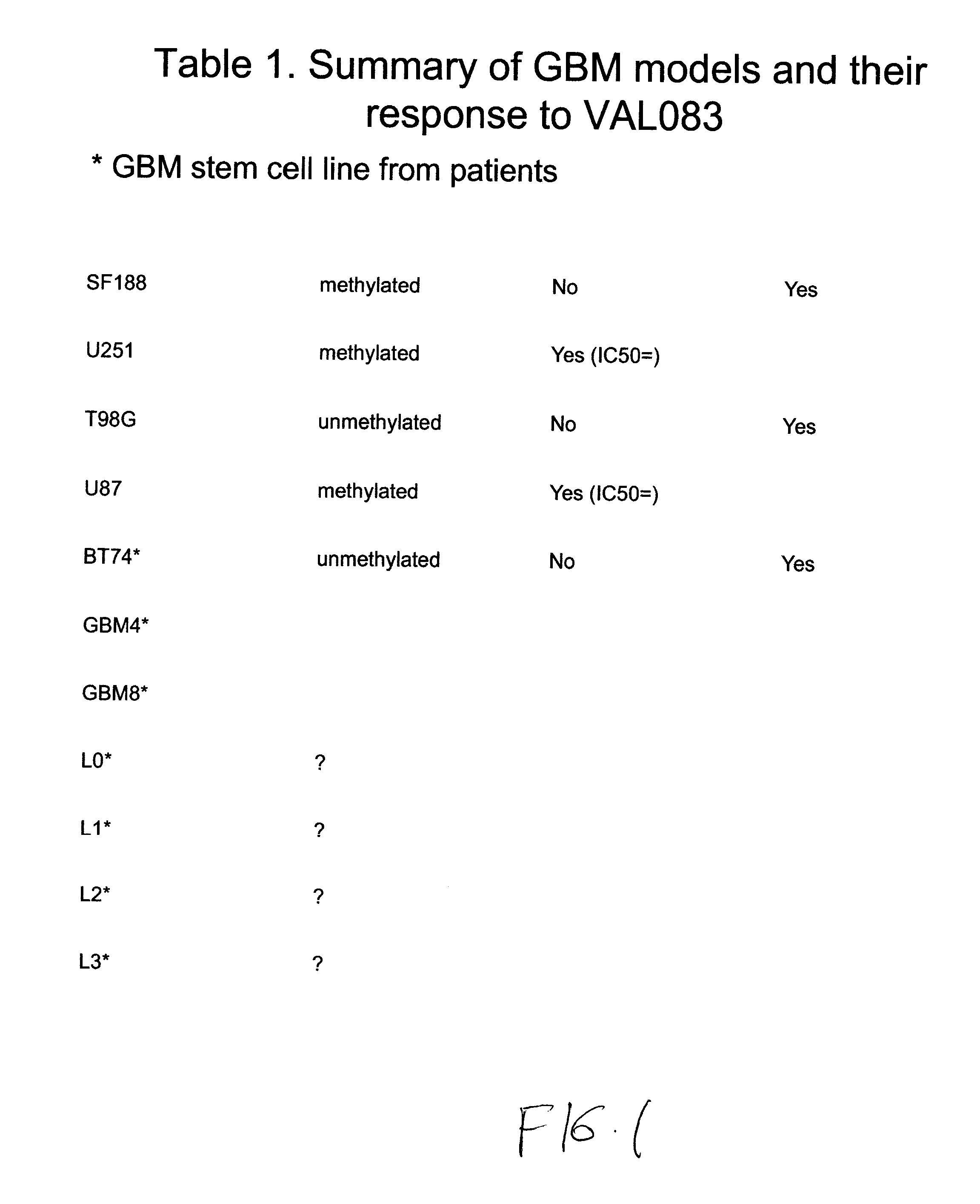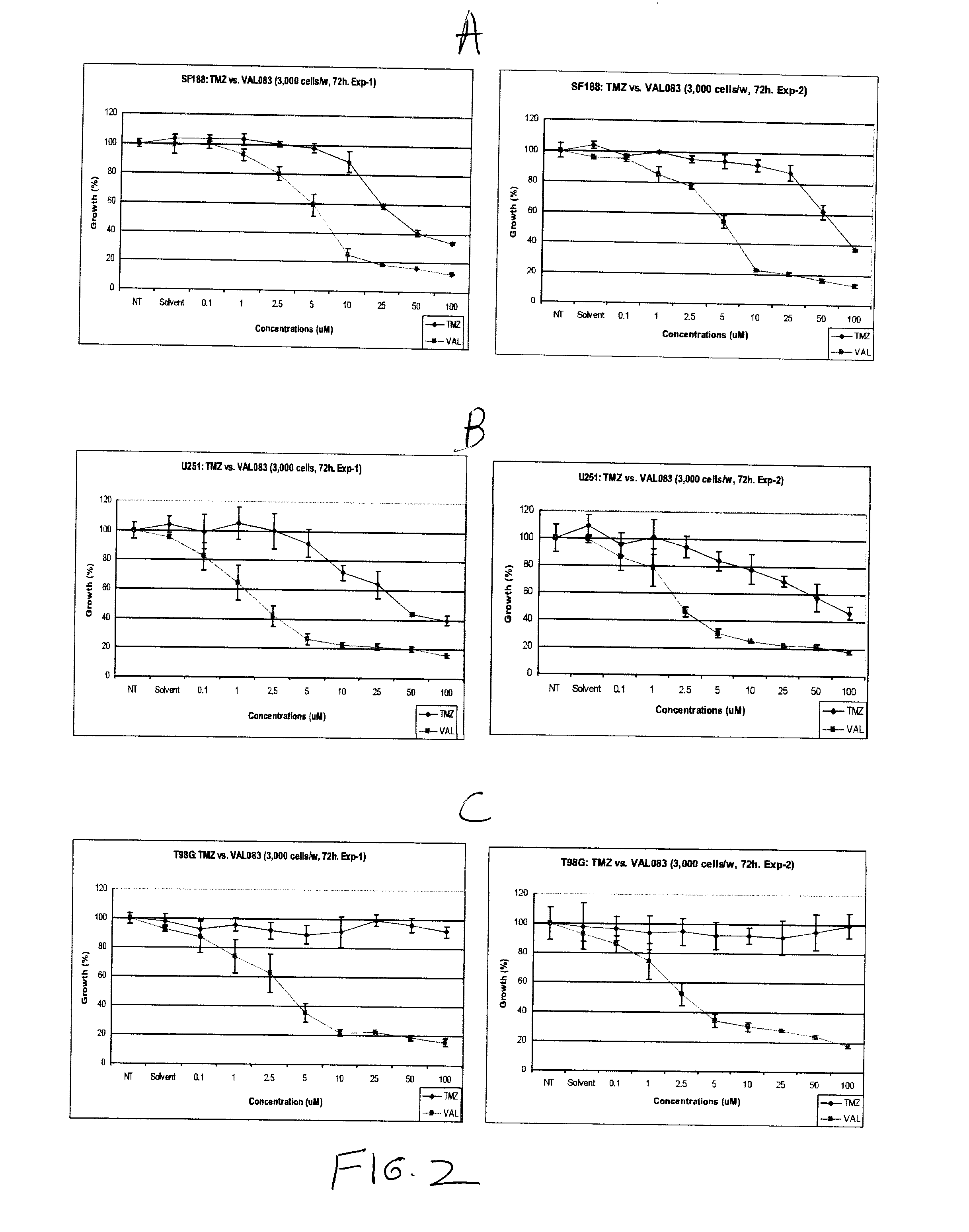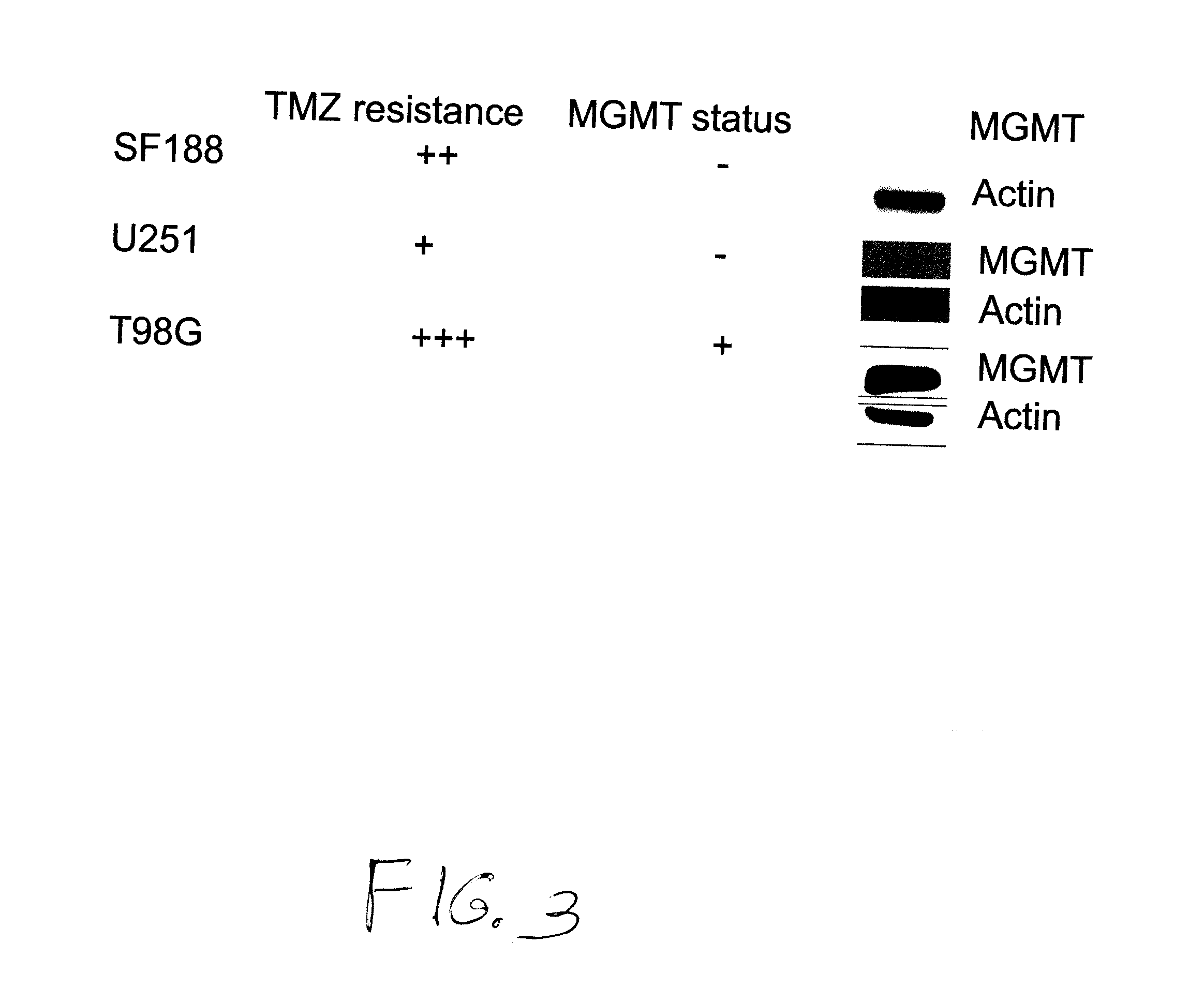Use of substituted hexitols including dianhydrogalactitol and analogs to treat neoplastic disease and cancer stem and cancer stem cells including glioblastoma multiforme and medulloblastoma
a technology of dianhydrogalactitol and hexitol, which is applied in the field of dianhydrogalactitol (), can solve the problems of gbm with an extremely poor prognosis, tumors can start producing symptoms quickly, and the tumors have a tendency to develop symptoms, and achieves the effects of suppressing the growth of cancer stem cells, and reducing the risk of gbm
- Summary
- Abstract
- Description
- Claims
- Application Information
AI Technical Summary
Benefits of technology
Problems solved by technology
Method used
Image
Examples
example
Use of Dianhydrogalactitol to Inhibit Growth of Glioblastoma Multiforme and Medulloblastoma Cells
[0840]Materials and Methods:
[0841]Cell Lines and Culture Conditions:
[0842]All cells were cultured in DMEM (Dulbecco's Modified Eagle's medium; Invitrogen / Gibco) with 10% FBS (fetal bovine serum; Invitrogen / Gibco) at 37° C. with 5% CO2, and subcultured twice weekly during the experimental period.
[0843]Drugs:
[0844]Temozolomide (TMZ) was purchased from Sigma Aldrich and dissolved in dimethyl sulfoxide (DMSO) (Sigma-Aldrich). A stock solution of 100 mM was kept at −20° C. before use. Dianhydrogalactitol (DAG; results with DAG are shown as “VAL” in the figures) was provided by Del Mar Pharmaceuticals Ltd. A stock solution of 100 mM was prepared by dissolving the lyophilized powder in the injection vial in sterile phosphate buffered saline (PBS) and kept at 20° C. before use.
[0845]Growth Assays:
[0846]Each cell line used was seeded at 3000 cells / well in 100 μL medium in a 96-well plate (BD Falc...
PUM
| Property | Measurement | Unit |
|---|---|---|
| median survival time | aaaaa | aaaaa |
| median survival time | aaaaa | aaaaa |
| median survival time | aaaaa | aaaaa |
Abstract
Description
Claims
Application Information
 Login to View More
Login to View More - R&D
- Intellectual Property
- Life Sciences
- Materials
- Tech Scout
- Unparalleled Data Quality
- Higher Quality Content
- 60% Fewer Hallucinations
Browse by: Latest US Patents, China's latest patents, Technical Efficacy Thesaurus, Application Domain, Technology Topic, Popular Technical Reports.
© 2025 PatSnap. All rights reserved.Legal|Privacy policy|Modern Slavery Act Transparency Statement|Sitemap|About US| Contact US: help@patsnap.com



